News
Top 5 Guadalupe Liveaboards
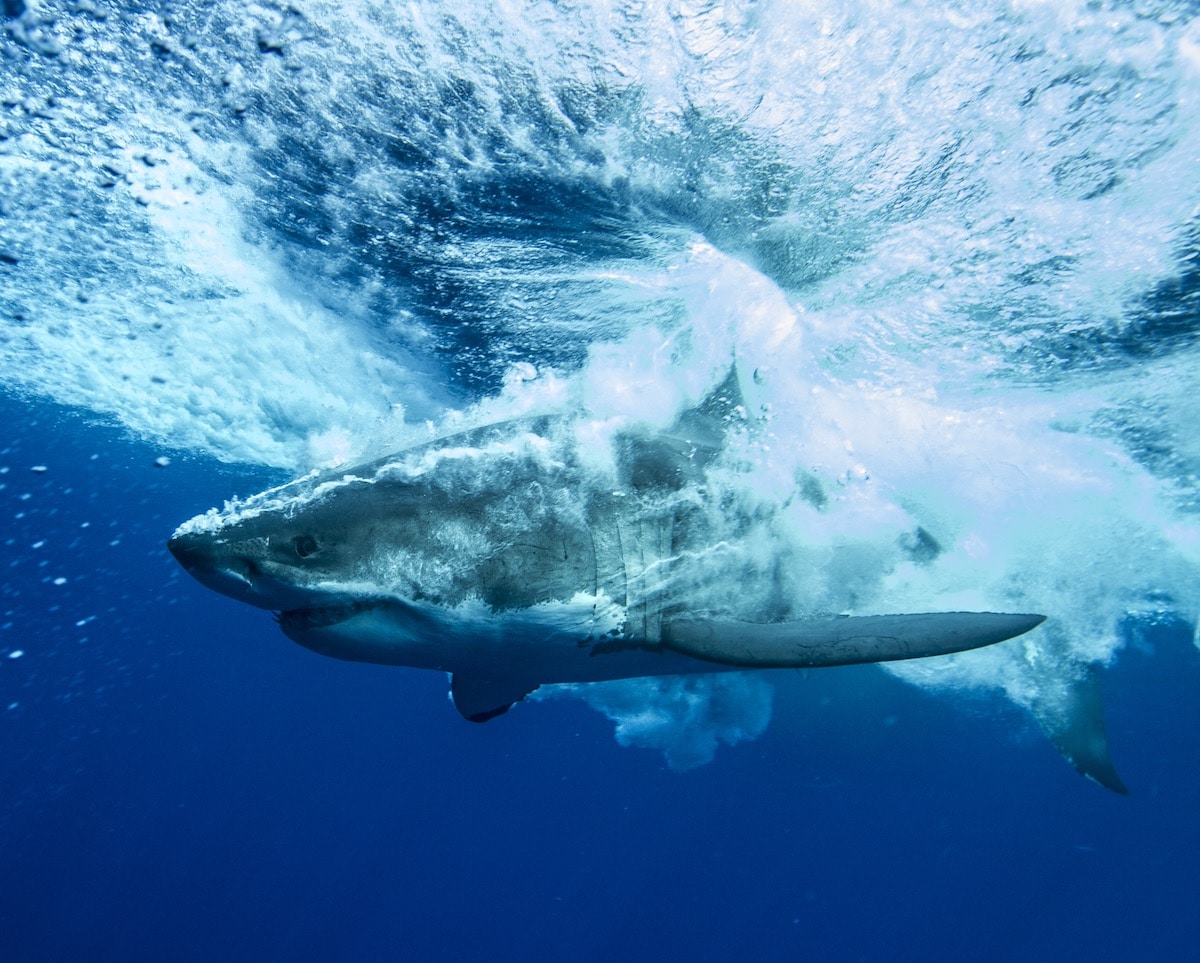
Shark Week has ended for another year, but shark fans needn’t dismay; the Guadalupe cage diving season is just beginning. This iconic destination has featured in various Shark Week programs and is the premier great white shark diving destination to visit.
Guadalupe Island has over 200 known individual great white sharks and offers the chance to dive with these sharks in crystal clear, warm waters. There are a variety of Guadalupe liveaboards to choose from, with vessels for all budgets and needs. It can be difficult to know where to start when choosing the right liveaboard though, so here are our top five Guadalupe liveaboards to try:
MV HORIZON, AMERICA’S SHARK BOAT
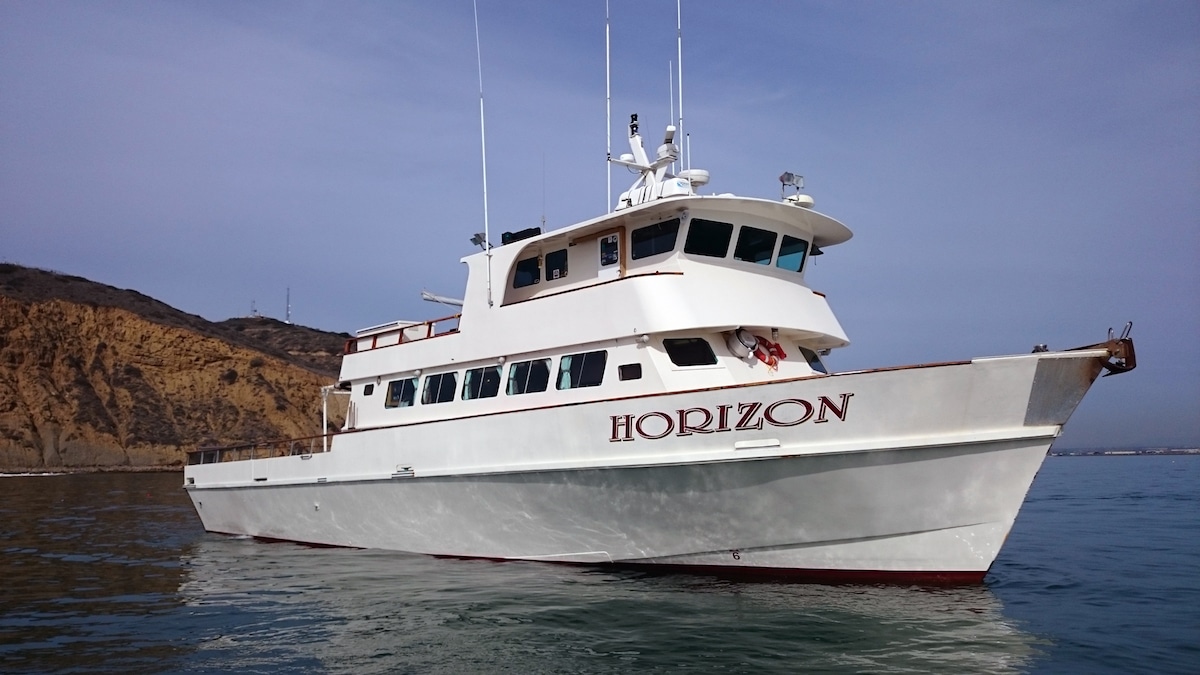
Photo: MV Horizon
The Original Guadalupe Liveaboard
America’s Shark Boat MV Horizon is the original Guadalupe liveaboard and has been offering shark diving at the island since 2000. The crew are experienced and knowledgeable, having known some of the Guadalupe sharks for 16 years.
Ideal for Budget-Conscious Safaris
This is a great liveaboard for those on a budget, looking to focus on the shark diving and learn more about shark research and conservation. The MV Horizon has been involved in shark research at Guadalupe and they have a strong environmental commitment and passion for shark conservation.
Limited Guest Numbers
Guests looking an intimate safari should consider the MV Horizon, as the vessel has 8 air-conditioned cabins and cater for just 16 divers. The bathrooms are shared and there is a sun deck and saloon to enjoy between dives.
Maximum Time in The Cage
Guests can enjoy up to 20 hours in the water thanks to their small guest numbers and large cage capacity.
Safari Details
MV Horizon cage diving safaris depart from San Diego and are 6 days long, with 3 days of diving.
Experience Level Needed
The MV Horizon specialises in safaris for non-divers and divers alike, and has a cage designed exclusively for non-divers.
NAUTILUS EXPLORER
The Nautilus Explorer is the Nautilus fleet’s flagship and has her own unique features to enjoy.
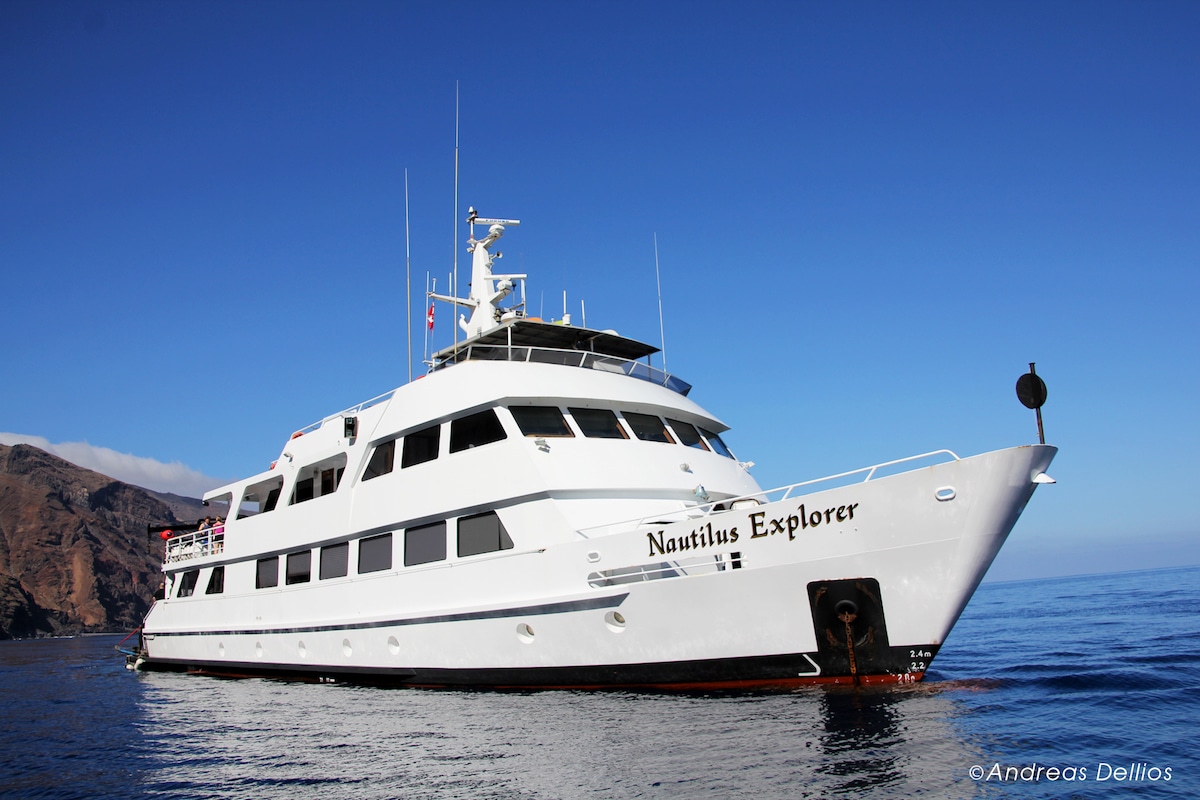
Nautilus Explorer. Photo: Andreas Dellios & Nautilus Liveaboards
Million Dollar Views
The Explorer is ideal for those wanting to enjoy fantastic ocean views from the dining room and lounge after a great day of diving, and really immerse themselves in being at sea even when they’re not in the water.
New 2018 Extension
The Explorer is even better in 2018, have been extended to include a huge new dive deck and water-level platform, enlarged superior suite and interior upgrades. The Explorer also has a 5-ton hydraulic crane and reinforced steel deck. Both of which have made this vessel ideal for hosting film and scientific crews.
Ideal for Mixed Dive Buddy Groups
There are 13 cabins, including mixed-gender triple staterooms and premium rooms, all with bathrooms and showers. Guests can enjoy the two sun decks and hot tub deck in-between dives.
Safari Details
Nautilus Explorer cage diving safaris depart from San Diego and are 6 days long, with 3 days of diving.
Experience Level Needed
Nautilus Guadalupe safaris are suitable for experienced divers and non-divers alike.
NAUTILUS BELLE AMIE
The big, beautiful 41m Nautilus Belle Amie liveaboard is the newest and largest of the Nautilus liveaboards and is the sister vessel to the Nautilus Explorer. She is more like a floating five-star hotel than a boat and was built with divers’ needs, safety and comfort in mind. She offers safaris to both Guadalupe and the Socorro Islands, Mexico.
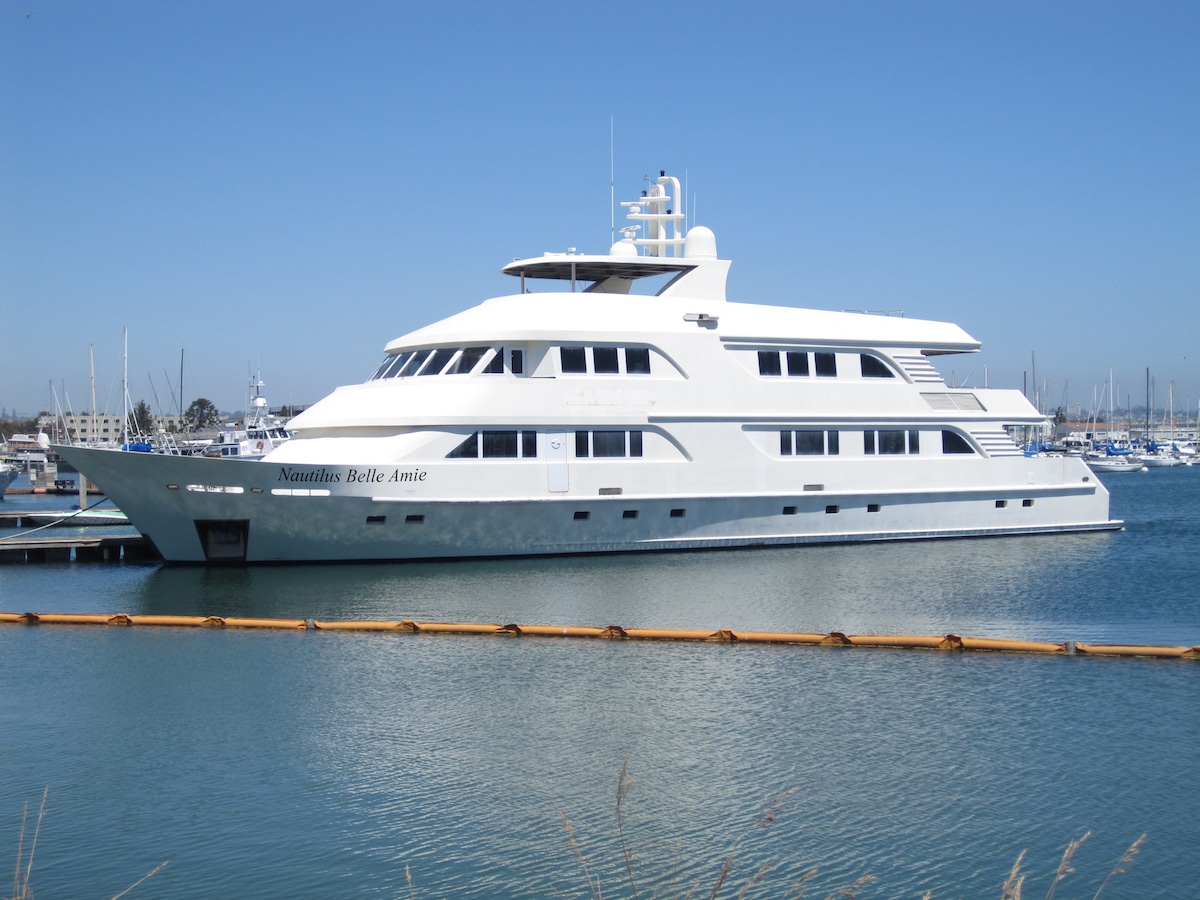
Photo: Nautilus Belle Amie
Maximum Guest Comfort at Sea
The Belle Amie prioritises guest comfort. She has a wide beam and deep draft, making her ideal for those who suffer from motion sickness and ensuring the most comfortable crossing possible to Guadalupe. The Belle Amie is also soundproofed, allowing guests ultra-quiet rooms and peaceful nights before action-packed shark dives.
Good for Larger Groups
With 16 cabins, including cost-effective staterooms, the Belle Amie is ideal for groups of friends or families visiting Guadalupe and wanting a variety of berth options to choose from. This vessel caters for up to 30 divers in total and the liveaboard is spacious and comfortable, with a beautiful full-length sundeck and large hot tub on the sun deck.
Dive from Dawn to Dusk
The cages are open from 7am to dinner time on the Belle Amie, allowing plenty of dive time with the sharks and almost unlimited time diving in the surface cages.
Submersible Cages
There are also submersible cages, providing a great opportunity to enjoy the sharks at depth and truly appreciate the environment they live in. Certified divers always get 3 or more submersible cage dives.
Guadalupe And Socorro Combo
For a truly unique experience, the Belle Amie offers 15-night safaris to enjoy both the sharks at Guadalupe and the giant mantas at the Socorro Islands. These safaris usually occur in November.
Safari Details
Nautilus Belle Amie cage diving safaris depart from San Diego and are 6 days long, with 3 days of diving.
Experience Level Needed
Nautilus Guadalupe safaris are suitable for experienced divers and non-divers alike.
NAUTILUS UNDER SEA
Most divers know this liveaboard from her previous life as the Undersea Hunter of Cocos Island. Since then she has been upgraded, stretched by 20 feet, given a new superstructure, an enclosed dive deck and more.
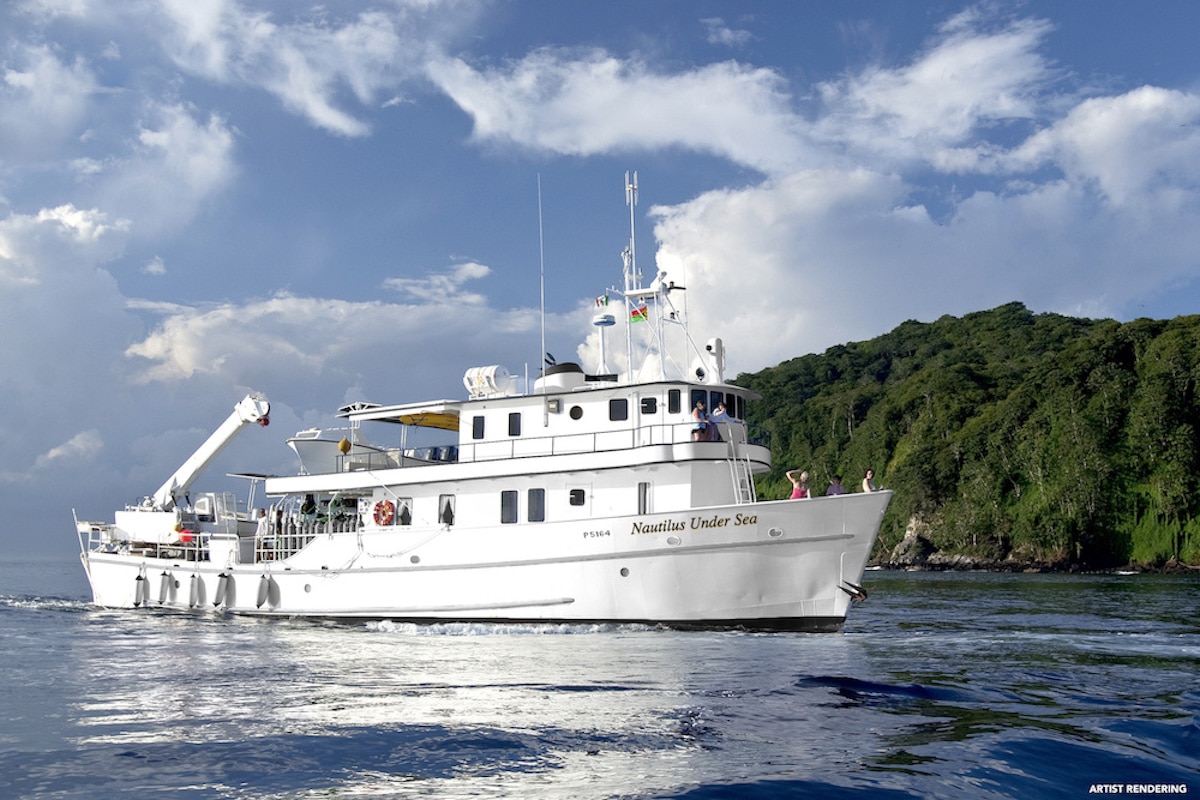
Photo: Nautilus Under Sea
From James Bond to Dr Silvia Earle
The Nautilus Under Sea was the support boat for James Bond’s ‘Licence to Kill’ and for a Deep Rover mission with Dr Silvia Earle. Having undertaken many research missions, she is a fascinating vessel to spend time on.
Intimate Dive Safaris
This vessel has just 8 cabins, with ensuite facilities and air conditioning. She caters for 18 divers, making her ideal for those looking for a more intimate safari.
Wheelchair Friendly
The Under Sea has a wheelchair friendly stateroom adjacent to the dive deck. This ADA compliant room has twin beds, ensuite facilities, air-conditioning and a huge window.
Ideal for Photographers
This liveaboard has plenty of space for photography equipment, with large camera set-up areas and personal camera storage.
Guadalupe And Socorro Combo
Like the Belle Amie, this vessel offers 15-night safaris to enjoy both the sharks at Guadalupe and the giant mantas at the Socorro Islands. These safaris usually occur in November.
Safari Details
Nautilus Under Sea cage diving safaris depart from San Diego and are 6 days long, with 3 days of diving.
Experience Level Needed
Nautilus Guadalupe safaris are suitable for experienced divers and non-divers alike.
SOLMAR V
With a traditional steel hull, plus brass and mahogany interiors, the Solmar V is a classic liveaboard with a very experienced crew.
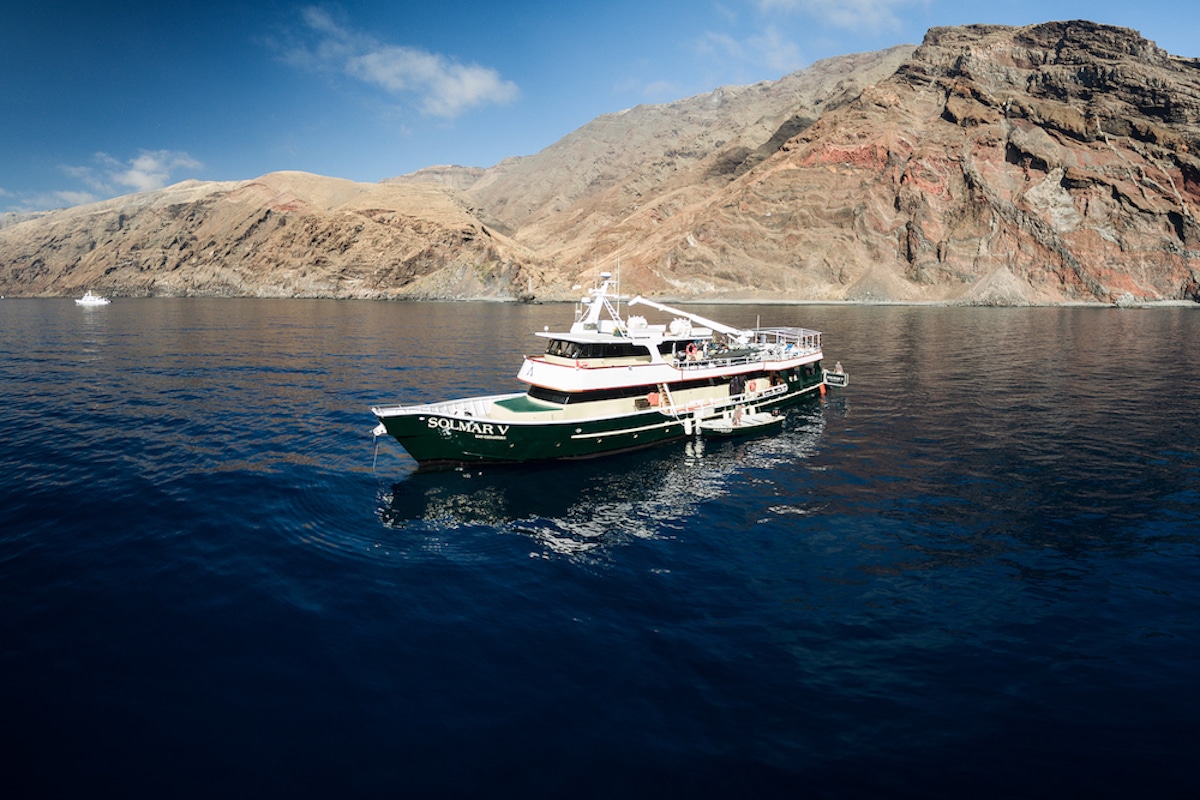
Photo: Solmar V
All About the Luxury
The Solmar V is focussed on luxury, offering 12 lavish staterooms with climate control, ensuite facilities, pillow top mattresses, non-allergenic alternative pillows and comforters.
Conservation Minded
The crew of the Solmar V are passionate about conservation and actively support marine conservation through Pelagic Life. This organisation aims to protect the marine megafauna of Mexico through raising awareness, contributing to sustainable ecotourism, and by making eco-conscious seafood choices.
Food Lovers Heaven
The Solmar V is very well known for gourmet cuisine and offers a variety of choices, including cooked-to-order breakfasts, three-course lunches and multiple course dinners. There are always snacks available and all beer and wine is included with the meals. The chef can easily accommodate dietary requirements. This liveaboard is ideal for food lovers.
Special Hotel Rates
The Solmar V partner hotel, Hampton Inn, offers special rates, complimentary airport shuttles and a free breakfast for Solmar V guests.
Perfect for Mini Vacations
Guadalupe safaris with the Solmar V are 5 days long and yet still include 3 full days of diving. They are ideal for mini vacations and those with limited time.
Safari Details
Solmar V cage diving safaris depart from San Diego.
Experience Level Needed
Solmar V Guadalupe safaris are suitable for experienced divers and non-divers alike.
This article was written by divers and writers at LiveAboard.com
Discover liveaboard diving holiday solutions around the world at Liveaboard.com. 
Blogs
Northern Red Sea Reefs and Wrecks Trip Report, Part 2: Wall to Wall Wrecks

Jake Davies boards Ghazala Explorer for an unforgettable Red Sea diving experience…
The second day’s diving was a day full of wreck diving at Abu Nuhas, which included the Chrisoula K, Carnatic, and Ghiannis D. The first dive of the day was onto the Chrisoula K, also known as the wreck of tiles. The 98m vessel remains largely intact where she was loaded with tiles which can be seen throughout the hold. The stern sits at 26m and the bow just below the surface. One of the highlights of the wreck is heading inside and seeing the workroom where the machinery used for cutting the tiles are perfectly intact. The bow provided some relaxing scenery as the bright sunlight highlighted the colours of the soft coral reef and the many reef fish.

Following breakfast, we then headed to the next wreck, which was the Carnatic. The Carnatic is an 89.9m sail steamer vessel that was built in Britain back in 1862. She ran aground on the reef back in 1869 and remains at 27m. At the time, she was carrying a range of items, including 40,000 sterling in gold. An impressive wreck where much of the superstructure remains, and the two large masts lay on the seafloor. The wooden ribs of the hull provide structures for lots of soft corals, and into the stern section, the light beams through, bouncing off the large shoals of glass fish that can be found using the structure as shelter from the larger predators that are found outside of the wreck.

The final wreck at Abu Nuhas was the Ghiannis D, originally called ‘Shoyo Maru,’ which was 99.5m long and built in Japan back in 1969 before becoming a Greek-registered cargo ship in 1980. The ship then ran aground on the reef on April 19th, 1983, and now sits at the bottom at a depth of 27m. Heading down the line, the stern of the ship remains in good condition compared to the rest of the hull. The highlight of the wreck, though, is heading into the stern section and down the flights of stairs to enter the engine room, which remains in good condition and is definitely worth exploring. After exploring the interior section of the ship, we then headed over to see the rest of the superstructure, where it’s particularly interesting to see the large table corals that have grown at the bow relatively quickly considering the date the ship sank. After surfacing and enjoying some afternoon snacks, we made sure everything was strapped down and secured as we would be heading north and crossing the Gulf of Suez, where the winds were still creating plenty of chop.

The next morning, it was a short hop to Ras Mohammed Nature Reserve for the next couple of days of diving. The 6am wake-up call came along with the briefing for the first site we would be diving, which was Shark & Yolanda. The low current conditions allowed us to start the dive at Anemone City, where we would drift along the steep, coral-filled wall. These dives involved drifts, as mooring in Ras Mohammed wasn’t allowed to protect the reefs. As a dive site, Shark & Yolanda is well-known and historically had a lot of sharks, but unfortunately not so many in recent years, especially not so early in the season. However, there was always a chance when looking out into the blue.

The gentle drift took us along the steep walls of the site, with plenty of anemone fish to be seen and a huge variety of corals. It wasn’t long into the dive before we were accompanied by a hawksbill turtle, who drifted with us between the two atolls before parting ways. Between the two reefs, the shallow patch with parts of coral heads surrounded by sand provided the chance to see a few blue-spotted stingrays that were mainly resting underneath the corals and are always a pleasure to see. With this being the morning dive, the early sunlight lit up the walls, providing tranquil moments. Looking out into the blue, there was very little to be seen, but a small shoal of batfish shimmering underneath the sunlight was a moment to capture as we watched them swim by as they watched us.

Towards the end of the dive, we stopped at the wreck of the Jolanda where the seafloor was scattered with toilets from the containers it was carrying. This provided a unique site to make a safety stop, which was also accompanied by a large barracuda slowly swimming by, along with a hawksbill turtle calmly swimming over the reef as the sun rays danced in the distance.
For the next dive, we headed north to the Strait of Tiran to explore the reefs situated between Tiran Island and Sharm El Sheik, which were named after the British divers who had found them. We started on Jackson before heading to Gordons Reef, where we also did the night dive. All the atolls at these sites provided stunning, bustling coral reefs close to the surface and steep walls to swim along, which always provided the opportunity to keep an eye out for some of the larger species that can be seen in the blue. Midwater around Jackson Reef was filled with red-toothed triggerfish and shoals of banner fish, which at times were so dense that you couldn’t see into the blue. Moments went by peacefully as we enjoyed the slow drift above the reef, watching these shoals swim around under the mid-afternoon sun.

The night dive at Gordon’s Reef was mainly among the stacks of corals surrounded by sand, which was great to explore under the darkness. After some time circling the corals, we came across what we were really hoping to find, and that was an octopus hunting on the reef. We spent the majority of the dive just watching it crawl among the reef, blending into its changing surroundings through changes in colour and skin texture. It’s always so fascinating and captivating to watch these incredibly intelligent animals, in awe of their ability to carry out these physical changes to perfectly blend into the reef. Before we knew it, it was time to head back to the boat to enjoy a well-deserved tasty dinner prepared by the talented chefs onboard.
Check in for the 3rd and final part of this series from Jake tomorrow!
To find out more about the Northern Red Sea reef and wrecks itineraries aboard Ghazala Explorer, or to book, contact Scuba Travel now:
Email: dive@scubatravel.com
Tel: +44 (0)1483 411590
Photos: Jake Davies / Avalon.Red
Marine Life & Conservation
Double Bubble for Basking Sharks

 The Shark Trust is excited to announce that, for two more days only, all donations, large or small, will be doubled in the Big Give Green Match Fund!
The Shark Trust is excited to announce that, for two more days only, all donations, large or small, will be doubled in the Big Give Green Match Fund!
Donate to Basking in Nature: Sighting Giants
The Shark Trust is hoping to raise £10k which will be doubled to £20k. This will go towards Basking in Nature: Sighting Giants. And they need YOUR help to reach they’re goal.
The Shark Trust’s citizen science project is to monitor and assess basking sharks through sightings; encouraging data collection, community engagement, and promoting nature accessibility. This initiative aims to enhance health and wellbeing by fostering a deeper connection with British Sharks.
Campaign Aims
- Increase citizen science reporting of Basking Sharks and other shark sightings to help inform shark and ray conservation.
- Provide educational talks about the diverse range of sharks and rays in British waters and accessible identification guides!
- Create engaging and fun information panels on how to ID the amazing sharks and rays we have on our doorstep! These can be used on coastal paths around the Southwest. With activities and information on how you can make a difference for sharks and rays!
- Promote mental wellbeing through increasing time in nature and discovering the wonders beneath the waves!
Donate, and double your impact. Click Here
-

 News3 months ago
News3 months agoHone your underwater photography skills with Alphamarine Photography at Red Sea Diving Safari in March
-

 News3 months ago
News3 months agoCapturing Critters in Lembeh Underwater Photography Workshop 2024: Event Roundup
-

 Marine Life & Conservation Blogs2 months ago
Marine Life & Conservation Blogs2 months agoCreature Feature: Swell Sharks
-

 Blogs2 months ago
Blogs2 months agoMurex Resorts: Passport to Paradise!
-

 Blogs2 months ago
Blogs2 months agoDiver Discovering Whale Skeletons Beneath Ice Judged World’s Best Underwater Photograph
-

 Gear Reviews2 months ago
Gear Reviews2 months agoGear Review: Oceanic+ Dive Housing for iPhone
-

 Marine Life & Conservation2 months ago
Marine Life & Conservation2 months agoSave the Manatee Club launches brand new webcams at Silver Springs State Park, Florida
-

 News3 months ago
News3 months agoWorld’s Best Underwater Photographers Unveil Breathtaking Images at World Shootout 2023

















